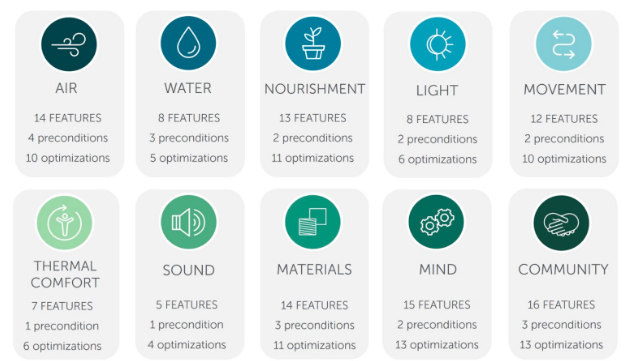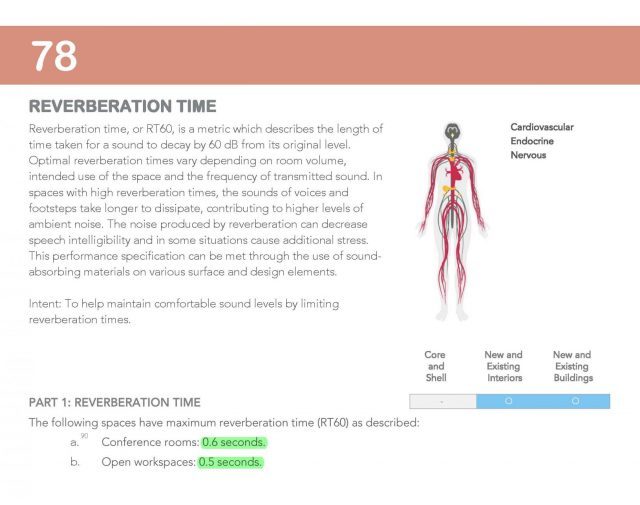Kristen Murphy
Sustainability Lead

Think back on a space that was noticeably noisy – are you able to concentrate deeply on work? Are you able to hear your friends in a crowded restaurant? Is it hard to sleep in the hotel room when traveling? Now, try to think about how this noise made you feel – Stressed? Absent-minded? Annoyed? If so, you’re not alone.
In fact, there is a whole body of research available about the negative effects of noise (i.e. unwanted sound) on health. The WELL Building Standard, a research-driven third-party building rating system focused on occupant health, recognizes good acoustic design as a key part of healthy buildings and I am excited to see the effects of this rating system on the industry. You cannot have a WELL-Certified building without considering building acoustics, so let’s take a look at what you need to do.
As I mentioned, unlike other building rating systems, WELL focuses specifically on how the interior environment in buildings affects people’s health. WELL is a broad-reaching system with multiple categories, deemed “Concepts”, with goals such as providing access to healthy food; reducing harmful chemical ingredients in cleaning products and building materials; promoting equitable organizational practices; and much more!

The Concepts are divided into “Features”, which are the pieces that contain the criteria that a project needs to do. Features are either “Preconditions” – i.e. required for a building to become WELL-Certified – or “Optimizations”. The number of Optimizations achieved determines the level of certification – Silver, Gold, or Platinum.
Acoustic design criteria have always been a part of WELL. For those keeping score at home, in the transition from WELLv1 to WELLv2, acoustics (formerly part of the Comfort Concept) has graduated into the Sound Concept. Personally, I feel that official recognition as a victory for acousticians everywhere!
Ideally, all WELL projects start early in design with all the key players at the table, in order to make everyone’s needs clear. For example, as an acoustician, to satisfy the requirements of the v2 “Sound Mapping” precondition, my work would influence a space’s design as early as programming: With the designers and engineers, we would think about the site and identify if there’s anything loud nearby; we’d establish goals for background noise and sound isolation and describe what the different players of the design team can do to achieve these goals; we’d help shape the layout of a space just by thinking of what areas are anticipated to be quiet and loud zones, so we can separate them if necessary.
From design to building occupancy, WELL requires multiple types of document types to make sure buildings deliver what they promise. Some of the documentation will be familiar to those working with other certification systems – such as annotated drawings, project narratives, etc. Perhaps what sets WELL apart from others is that WELL buildings must also be verified after completion. Which makes a lot of sense, how can you classify a high performing building without knowing how it actually performs?

The acoustic criteria are no exception to the rule: a trained and independent third party will go to the field with a sound level meter and test the quantitative design goals such as background noise, sound isolation performance, and reverberation time.
It doesn’t end there: in order for a project to keep their certification, data must continuously be collected (for things like occupant satisfaction) and the project must renew every three years, which includes another round of field-testing.
I like to think of WELL as a way to recognize high achievement in projects that prioritize the well-being of those whom the building serves. Although WELL may seem demanding, it formalizes a way to bring all parties to the table to identify what makes a building healthy and makes sure that it delivers what it promises. I cannot wait to see these practices spread the importance of promoting healthy spaces that we can all enjoy for years to come.